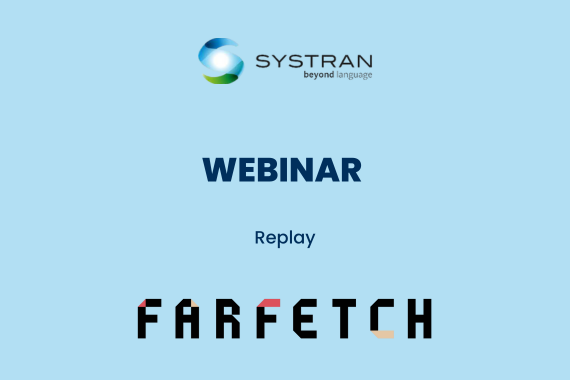Lexcelera is a Language Service Provider (LSP) that supports its clients in communication and multilingual marketing needs. It provides translation and localization of content for large accounts across various sectors. In 2018, the LSP adopted machine translation to streamline the work of its teams. Best practices, tips… 5 years of experience in the making!
More about Lexcelera
In 2022, the agency joined t’Works, a group of eight language service providers.
Machine translation for Language Service Provider
The challenges: translating faster, handling high volumes without compromising on quality
LSPs are increasingly facing the task of managing large volumes of content. They are in search of the best processes to meet communication and marketing needs, while maintaining a high level of quality and creativity.
They must also possess expertise in different fields. At Lexcelera, customers come from industries as diverse as energy and mining, civil engineering and construction, medical equipment, etc.
Furthermore, as companies undergo transformation through Artificial Intelligence (AI) for example, LSP must become more integrated into their clients’ processes.
Productivity gains from machine translation
On average, a human translator can translate between 1,500 and 3,000 words per day. By using machine translation, Lexcelera can process nearly four times more content on a daily basis. This represents productivity gains of 30-50%.
With transparency, today you can translate 900 to 1,500 words per hour. This is a significant increase compared to traditional translation!
Laurence Roguet, Managing Director at Lexcelera
The key to quality translation: Engine Training
Training the translation engine :
#1 – Mastery of general language
During the first phase, the translation engine is trained on two language models simultaneously, in this case, German and Japanese, focusing on legal matters. The engine is initially exposed to simple and short sentences, gradually progressing to complex ones.
As the translation engine matures, it becomes proficient in the current language.

#2 – Technical specialization
In the second phase, highly technical or domain-specific data is added to the generic engine. At this point, it becomes possible to work with a translation engine that has already been trained by experts. Depending on your sector and needs, you can further refine the engine yourself.

This allows your engine to acquire highly specialized skills. The translation engine allows you to get specialized translations to your customers, regardless of their field of expertise.
Now, you can train machine translation with a small amount of data, as long as it is of high quality. Other tools do not offer this capability; they only provide terminology. I prefer to have a straightforward method for training models.
We start with a generic engine and enhance it with highly technical data. It only takes a few hours to create a new model using SYSTRAN Model Studio!”
Laurence Roguet, Managing Director at Lexcelera
Quality improvements achieved at each iteration: focusing on the BLUE score
With SYSTRAN technology, the quality of machine translation is evaluated by an algorithm based on specific metrics. This evaluation compares machine translation with human translation, resulting in a score called the BLUE score. The higher the score, the closer the translations are to human quality. The lower the score, the more the translations differ from human quality.
This BLUE score is used to assess the performance of the created resource. Based on the initial evaluation, the resources are refined through an iterative process. The model goes through cycles, the output is evaluated, and so on.
Since implementing the tool, we have trained several translation models. On average, each iteration yields a quality improvement of 10 to 15 BLUE score points, even if the starting point was already high. That’s excellent!
Laurence Roguet, Managing Director at Lexcelera
The role of the translator in the translation process
It evolves with machine translation. Before the process, acomputational linguist conducts a terminology study and a corpus analysis to assist the teams in developing the training engines. Translators then engage in post-editing and provide feedback to continuously enhance these engines.
Even if the tasks change, the role of translators remains crucial in machine translation processes. The terminological and linguistic work of the translators implement a robust process, as their role adds significant value to the SYSTRAN teams.
Even when using the machine, human input is still present. Translators become linguists and post-editors, performing more high-value tasks. Our team is confident about the results, focusing more on language and creativity than on searching for terminology or correcting spelling, grammar, or anything that I don’t think a translator truly enjoys.”
Laurence Roguet, Managing Director at Lexcelera
The choice of the SYSTRAN solution
After 5 years of using SYSTRAN engines, Lexcelera continues to compare machine translation solutions available in the market by:
- conducting benchmarks on the new tools available;
- assessing the level of autonomy gained from the solutions.
The most recent benchmark took place in 2021 during the integration with the German group t’Works. Lexcelera was already utilizing SYSTRAN technology. The objective was to determine which tool was the most effective in meeting the agency’s objectives and should be employed in the new organization.
A test was conducted on the English/German language pair. As a result, SYSTRAN technology outperformed every other language!
SYSTRAN remains the most suitable solution for nearly all the languages we handle and has provided us with a great deal of autonomy for daily and easy training. The key was being able to train and improve the machine’s performance through our linguistic activities.
Laurence Roguet, Managing Director at Lexcelera
For Lexcelera, the next step is to deploy machine translation at the highest level within the t’Works group. The teams aim to remain pioneers in the field and share best practices, thereby sustaining the efforts made over the past 5 years within the agency.
Would you like to learn more about machine translation and the changes it brings to Lexcelera?






